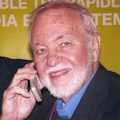Most wireless technologies—including the newer WiMAX, WCDMA, HSDPA, and LTE—require accurate measurement and control. Optimizing the power level ensures a more reliable connection link and maximizes data speeds. Measuring that power level isn’t easy, though.
Newer technologies like orthogonal frequency-division multiplexing (OFDM), WCDMA, and quadrature amplitude modulation (QAM) have a high crest factor, which is the ratio of the peak to rms value of the signal expressed in decibels. Crest factor can be as high as 12 dB in some systems, and it’s a real challenge for designers who must create a circuit to measure that power accurately.
The LT5570 RF power detector from Linear Technologies solves that problem (see the figure). It accurately measures the rms power of complex signals in the 40-MHz to 2.7-GHz range. The dynamic range is typically 50 to 60 dB based on frequency, and it can accommodate a crest factor up to 12 dB. The measurement accuracy is ±0.5 dB over the full dynamic range and ±0.3 dB from –40ºC to 85ºC.
Its output is a linear dc voltage ranging from 0 to 2.4 V that’s proportional to the rms input value of the signal with a scaling factor of 36.5 mV/dB. The linearity deviates less than ±0.5 dB from the ideal log-linear straight line over the full temperature range. The device has a –52- to 13-dBm input range depending on the frequency as well as a fast rise time of 500 ns.
The detector consumes 26.5 mA with a 5-V supply. Its shutdown feature decreases the supply to current to 0.1 µA. The device comes in a 10-pin, 3- by 3-mm dual flat no-lead (DFN) package. It costs $5.75 in 1000-unit quantities.
Linear Technology Corp.
About the Author

Lou Frenzel
Technical Contributing Editor
Lou Frenzel is a Contributing Technology Editor for Electronic Design Magazine where he writes articles and the blog Communique and other online material on the wireless, networking, and communications sectors. Lou interviews executives and engineers, attends conferences, and researches multiple areas. Lou has been writing in some capacity for ED since 2000.
Lou has 25+ years experience in the electronics industry as an engineer and manager. He has held VP level positions with Heathkit, McGraw Hill, and has 9 years of college teaching experience. Lou holds a bachelor’s degree from the University of Houston and a master’s degree from the University of Maryland. He is author of 28 books on computer and electronic subjects and lives in Bulverde, TX with his wife Joan. His website is www.loufrenzel.com.